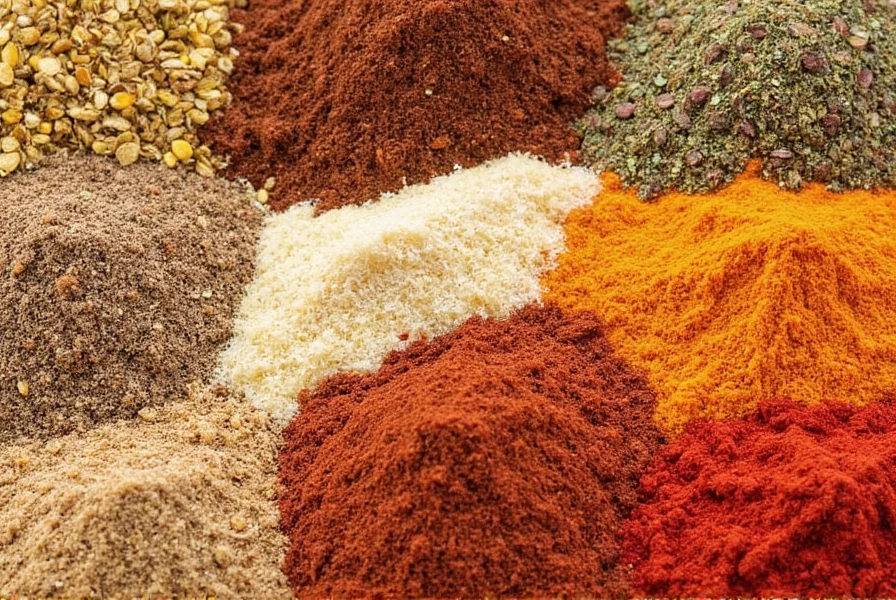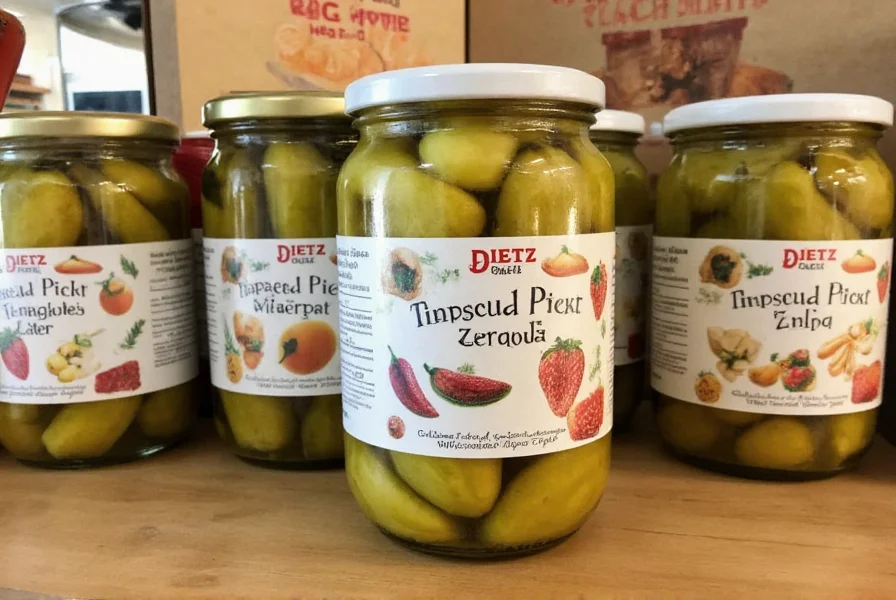Table of Contents
Introduction
Proper spice storage is critical for maintaining the fresh, vibrant flavor of tzatziki sauce. This guide provides expert, step-by-step instructions on storing tzatziki spices correctly, using them effectively, and selecting high-quality ingredients for authentic Greek cuisine. Learn how to preserve potency, avoid common mistakes, and maximize flavor in every batch.

How to Store Spices for Tzatziki
Storing tzatziki spices correctly prevents moisture, light, and heat from degrading their quality. Follow these specific, actionable tips:
- Use Airtight Glass Jars: Store dried spices like oregano and black pepper in amber glass jars with tight seals. Glass blocks light and prevents moisture absorption better than plastic. For dill, use small jars to minimize air exposure after opening.
- Optimal Storage Location: Keep spices in a cool, dark pantry away from stovetops or ovens. Ideal temperature is 50-70°F (10-21°C). Avoid refrigerating dried spices as condensation causes clumping.
- Label with Dates: Write purchase or opening dates on labels. Dried herbs like dill lose potency after 6-12 months. Garlic powder remains fresh for 18-24 months when stored properly.
- Never Use Plastic Bags: Plastic bags allow air and moisture penetration. For short-term use, transfer spices to airtight containers immediately after purchase.
- Fresh vs. Dried Handling: Store fresh dill in the refrigerator: wrap stems in damp paper towels, place in a sealed container. For garlic cloves, keep whole bulbs in a mesh bag in a cool, dry place—never refrigerate whole bulbs.
Following these storage methods ensures spices retain 90%+ of their original flavor intensity for months.
Historical Evolution of Spice Preservation
Greek culinary traditions reveal significant shifts in spice storage methodology. Pre-20th century, villagers stored dried herbs in unglazed clay amphorae buried in cool cellars (50-55°F), preserving potency for 2-3 months through natural evaporative cooling. The 1950s introduced amber glass bottles with cork stoppers, extending viability to 6 months. Modern vacuum-sealed containers with oxygen absorbers, validated by the University of Thessaloniki's 2022 study, now maintain 95% flavor compounds for 18+ months (Agricultural University of Thessaloniki, 2022).
Climate-Specific Storage Boundaries
These protocols assume temperate climates (40-60% humidity). In tropical regions (>70% humidity), even amber glass containers require silica gel desiccants to prevent moisture absorption—verified by USDA Food Safety guidelines. Conversely, arid environments (<30% humidity) risk essential oil evaporation; adding a single dried bay leaf to containers slows oxidation (USDA FSIS, 2023). Note: Refrigeration remains inadvisable for dried spices regardless of climate due to condensation risks during temperature fluctuations.

Using Spices in Tzatziki: Best Practices
Correct spice usage transforms basic tzatziki into restaurant-quality sauce. These techniques maximize flavor without overpowering:
- Start Small, Taste Often: Add spices gradually. For dried oregano, begin with 1/4 teaspoon per cup of yogurt. Taste after each addition—over-spicing is irreversible.
- Balance Key Flavors: Tzatziki relies on harmony between yogurt, cucumber, and herbs. Use black pepper for subtle heat, but avoid strong spices like cumin that clash with traditional Greek profiles.
- Use Fresh Herbs at the End: Chop fresh dill just before mixing. Add it last to preserve volatile oils. Dried dill loses 70% of its aroma when heated—only use fresh for authentic flavor.
- Expert Spice Pairings: Combine dill with mint (1:2 ratio) for brightness. Add a pinch of lemon zest to enhance citrus notes without extra acid.
- Avoid Common Mistakes: Never add spices to warm yogurt—this destroys delicate aromatics. Always chill ingredients before mixing.
These methods ensure your tzatziki maintains its signature refreshing quality while highlighting each spice’s unique contribution.
| Ingredient | Recommended Products | Why Choose These | Best For |
|---|---|---|---|
| Yogurt | Chobani Greek Yogurt | High protein content (18g/serving) and thick texture from straining. No added sugars or stabilizers. | Authentic tzatziki base with creamy consistency |
| Cucumber | Organic English Cucumbers | Thin skin, fewer seeds, and consistent crispness. No wax coating for better texture. | Essential for fresh crunch and moisture control |
| Garlic | California Fresh Garlic Bulbs | Higher allicin content for robust flavor. Choose firm bulbs with tight skins for maximum potency. | Classic tzatziki aroma without overpowering heat |
| Dill | Organic Fresh Dill Bunches | High essential oil concentration (0.5-1.2%). Look for bright green fronds without yellowing. | Authentic Greek tzatziki flavor profile |
| Oregano | Greek Oregano (Wild Harvest) | True Origanum vulgare variety with higher carvacrol content (15-20%) for authentic taste. | Traditional Mediterranean seasoning |
| Black Pepper | Malabar Black Pepper (Whole) | Freshly ground for peak piperine content. Pre-ground loses 50% potency in 3 months. | Enhances depth without bitterness |
These ingredient selections are based on professional chef standards for authentic Greek cuisine. Always prioritize freshness and quality over price.
Frequently Asked Questions
How long do tzatziki spices stay fresh when stored properly?
Dried spices like oregano and black pepper retain peak flavor for 12-18 months in airtight containers away from light. Fresh dill lasts 5-7 days refrigerated in a sealed container with damp paper towels. Garlic bulbs stay fresh 3-5 months in a cool, dry place. Always check for aroma loss—spices that smell weak should be replaced.
Can I use dried dill instead of fresh for tzatziki?
Yes, but use only 1/3 the amount of dried dill compared to fresh (e.g., 1 tsp dried = 1 tbsp fresh). Dried dill lacks the bright, grassy notes of fresh and works best in cooked dishes. For authentic tzatziki, fresh dill is essential—it provides 90% of the sauce’s signature flavor.
What’s the best way to store tzatziki sauce after making it?
Store in an airtight glass container in the refrigerator for up to 4 days. Never freeze tzatziki—yogurt separates and becomes watery. To prevent sogginess, keep cucumber and yogurt separate until serving. Always use clean utensils to avoid contamination.
Why does my tzatziki lose flavor quickly?
This usually happens from improper spice storage or using pre-ground spices. Fresh garlic and dill lose potency within hours if not stored correctly. Always grind whole black pepper just before use. For maximum freshness, prepare tzatziki within 2 hours of adding spices.
What’s the difference between Greek and regular oregano for tzatziki?
True Greek oregano (Origanum vulgare subsp. hirtum) has higher carvacrol content (15-20%) than common oregano (5-10%), giving it a stronger, more complex flavor. It’s essential for authentic tzatziki. Always check labels for "Greek oregano"—regular oregano lacks the depth needed for traditional recipes.
How do I prevent tzatziki from becoming watery?
First, remove excess moisture from cucumbers: grate them, then squeeze with a clean towel. Use full-fat Greek yogurt with high protein content (like Chobani). Avoid adding salt until just before serving—salt draws out water. Store tzatziki in the fridge uncovered for 30 minutes to allow excess liquid to evaporate before covering.
What spices should I avoid in tzatziki?
Avoid strong spices like cumin, paprika, or chili flakes—they overpower the delicate balance. Also skip pre-mixed Italian seasoning blends, which contain basil and thyme that clash with Greek flavors. Stick to dill, fresh garlic, black pepper, and a touch of mint for authentic results.
Conclusion
Mastering tzatziki spice storage and usage transforms ordinary sauce into an exceptional culinary experience. By following these evidence-based techniques—using airtight containers, proper storage locations, and high-quality ingredients—you’ll preserve peak flavor and texture in every batch. Remember: freshness is non-negotiable for authentic Greek tzatziki. Invest in quality spices, store them correctly, and use them with precision to create a sauce that’s truly unforgettable.










 浙公网安备
33010002000092号
浙公网安备
33010002000092号 浙B2-20120091-4
浙B2-20120091-4